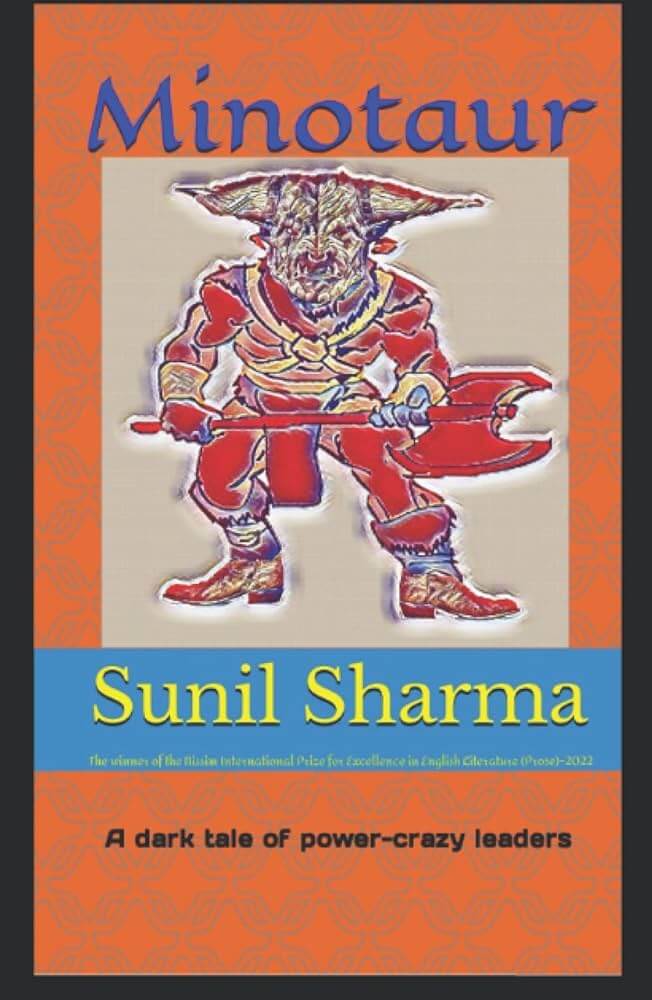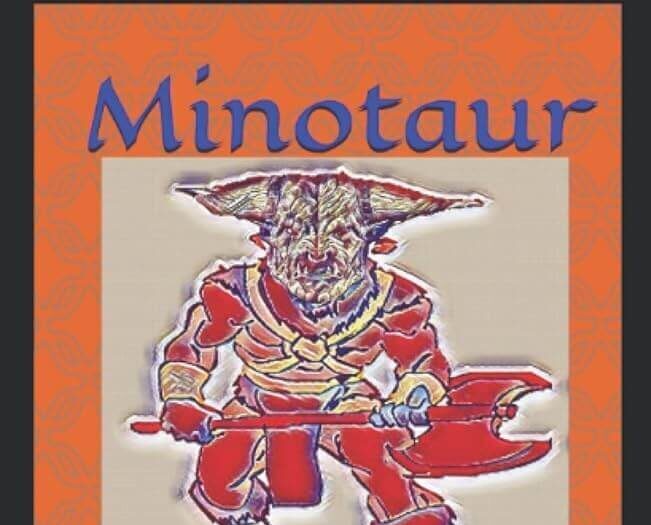Reading Time: 4 minutes
Anita reviews Dr. Sunil Sharma’s novel “Minotaur”, which explores the complexities of humanity, power, and the struggle for change through a compelling narrative blending historical figures and fictional characters, exclusively for Different Truths.

This novel by writer and editor Dr Sunil Sharma seems like a carefully crafted treatise on war and peace to caution and foretell. It’s a stream of consciousness on morality, on goodness and evil, on historical lessons unlearnt. It’s a call to restraint, a soliloquy on humanity and all its ills and scummiest emotions of authority, greed, and lust. The novel will urge you to pay attention, to ponder, to deliberate, to accept, even to resign, and to still endeavour for change. Minotaur is historical fiction with mammoth proportions that remind us of conquerors and despots such as Napoleon, Bismarck, Cornwallis, Hitler, Mussolini, and others. It reminds me of novels such as It Can’t Happen Here by Sinclair Lewis, of characters such as Lord Voldemort in Rowling’s Harry Potter, President Coriolanus Snow in The Hunger Games by Suzanne Collins, or Napoleon in George Orwell’s 1984, Animal Farm.
The novel as such invokes fear, disgust, and loathing at the despot, Minotaur, and others like him through stark realist imagery that one can see and shudder from, like watching Joseph Wilford and, to some extent, Melanie Cavill in the American television series Snowpiercer or other nightmarish movies on single-despotic leaders on a 70-mm film in an immersive 3-D IMAX theater!
An interesting literary technique employed is the frame story, which is the construction of a plot within a plot.
An interesting literary technique employed is the frame story, which is the construction of a plot within a plot. Sharma places known figures from history and familiar locations within fictionalised characters, with an intertwining of history and fiction as an ongoing flow throughout the larger story of the Minotaur interspersed with small plots of myriad historical figures. So, it appears that one has the Harara (Ethiopian Harari) tribe on the Devil’s Island with Francis Drake, Henry Livingston (a distant relative of David Livingston), Caesar, Macaulay, and writers like Conrad, Margaret Mead, Shakespeare, and Gabriel Marquez all interwoven as real or imagined characters in the novel at different times and phases.
The novel’s main plot is about a dictator who takes his closest allies and women/wives and escapes from his burning, sinking country caught in the throng of a coup against him. Their aeroplane has a technical snag, and it crashes and lands on the beautiful, remote beaches of Devil’s Island. The story then moves forward as a conflict narrative between them as the “outsiders,” symbolising invaders, and the “natives,” bent on preserving their independence and traditional ways. The compelling urge of the Harara tribe to retain the essentiality of the “forest…for the very survival of this planet.” (p. 51) is reminiscent of the struggles of the Na’vi people in the movie Avatar.
These debates center on ethics, morals, nobility, and criminality…

Minotaur plays a duality of roles in the novel, being the philosophical narrator and the conqueror, and through this clever method of internal monologue, the author reveals a dichotomy of both the wise and the foolish in Minotaur’s character through debates in his mind and with others as well. These debates center on ethics, morals, nobility, and criminality, while Minotaur himself mostly indulges in malevolence, corruption, and misogyny. On pages 59–60, it’s clear that Minotaur is speaking of a larger humanity while not professing or adhering to it in his own life. His inner dialogue divulges his views, or those of his inner hero, on “…race, colour, region, and nation. Once we were one, now many. Killing, Raping. Plundering. Worse than the wild animals. We call it progress in the high-tech late 20th century…. A rational century in theory and irrational in practice. A century, which saw the beastly side of the man, no beastly is a wrong term, the most horrible satanic side of a man.” Readers must get a copy of the novel to find out what Minotaur does or what happens to him in the end.
This novel portrays a vast canvas invoking realism, surrealism, presentism, the past, and futurism as well. I believe that multi-layered exposition invokes numerous emotions in the reader who walks the journey of a fallen dictator willing to pursue his ambitions at any length. Awe, trepidation, regret, guilt, superiority complex, derision, loss—all the feelings that Minotaur goes through seep into the psyche of the reader, which is a great tribute to an author. At times one becomes with him, and at other times one wishes to catch him by the shoulders and shake him out of his crass indulgence that benefits no one. Quite like the emotions we feel with historical and contemporary leaders and events. The protagonist is not a lovable character, and Sharma, I believe, did not intend for him to be one. The darkness of a leader such as Minotaur with all its consequential vicissitudes was intended by the author to jerk us from the complacency or adulation that some blindly have towards such leaders. It provides a vivid and unforgettable synaesthesia experience.
There are copious quantities of intrigue, crime, and subterfuge.
Reading this gripping novel, I was reminded of television series and movies such as Quantica, James Bond, Fauda (Israeli television series), The Night Agent, Kala Pani (Hindi), Khufiya (Hindi), and so forth. There are copious quantities of intrigue, crime, and subterfuge. And through the movement of characters and their actions, the author deftly talks about political philosophies that penetrate and widen the fissures among humans, such as communism, anti-communism, liberalism, conservatism, humanism, and democracy. Very astutely, Sharma brings out racism, classism, and gender abuse. He also postulates on the manifest destiny of white populations, the white man’s burden conquering the world to assist in the development of the less civilised. The eternal battle between the haves and have-nots—as determined by historical movements, theories, values, or modern concepts and actualisations—encounters, accounts, plans, successes, and failings of power-crazy leaders or explorers are all in this spellbinding novel.
There is magical realism in the story through factual and invented characters, and the setting of the novel on an obscure, protected island and all it portends for its inhabitants and the invaders. A must-read to remind us of human fallacies that are immemorial. Given the contemporary slide into a dystopian world, Sharma acts as a much-needed Nostradamus.
Cover picture provided by the reviewer

















